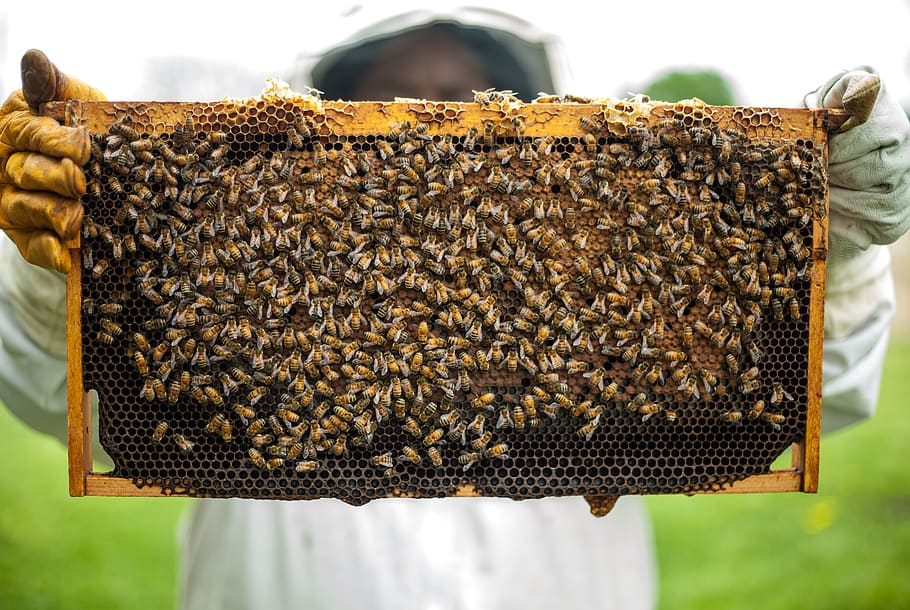BEE FARMING
Bee keeping is the third largest business in the world and the bee is the only insect friend of man who provides free service of pollination to increase the yield of agricultural crops.
Beekeeping is an agricultural supplementary and forest based industry and the conservation of local and forest bees and rearing them in wooden boxes yields honey and other edible and non-edible rich and valuable products. 85% of crops on earth need pollination. It is the third largest business in the world that can be started without essential expenses like electricity and water building construction and is an employment generating business.
Bees are kept for obtaining and selling honey in large quantities. Honey bees convert the nectar and pollen of flowers into honey and store it in their hive. There is a very ancient tradition of collecting honey from forests and other places. Beekeeping is a profitable and profitable industry as the demand for honey increases in the market. The natural wax produced from it is also economically profitable.

• Flower juice/pollen is utilized. Financial gain is achieved and the problem of employment is solved.
• Production of pure honey, production of wax and other base products.
• Beekeeping without any other additional fertilizers, seeds, on farm embankment/behind the farm benefits agriculture. The production of vegetables and flowers in agriculture increases by half to half times. Because bees do the work of pollination very well.
• Human health is maintained by consumption of honey. It works as a natural medicine. Consuming honey does not cause many diseases. It is beneficial in diseases like blood pressure, obesity etc.
• Bee keeping costs very little and takes relatively little time. It also takes up very little space.
• There are advantages of beekeeping in farms with low quality land.
• Beekeeping has a positive impact on the environment. Bees play a very important role in pollination. It also increases the production of fruits.

Species of bees The stonefly Apis dorsata is an excellent honey collector with an average honey production of 50-80 kg per colony. The small bee Apis floria collects less honey and produces approximately 200-900 grams of honey per colony. Honey production by Indian bee Apis cerana indica is 6-8 kg per colony per year. European bees and Italian bees Apis mellifera have an average honey production of 25-40 kg per colony. Stingless bee Trigona iridipennis Apart from the species mentioned above, there is another species present in Kerala called Stingless bee. They are not truly stingless, but their sting is not well developed. They pollinate well. They produce 300-400 grams of honey every year.
Ref – http://mr.vikaspedia.in/agriculture/agri_Support/92e92792e93e936940-92a93e932928
Since there are so many benefits, it is necessary to spread this natural activity and one of the goals is to get knowledge and information about it.


